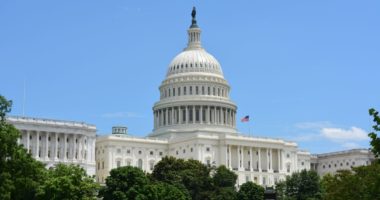Ed Trust Calls for Linking Student Aid and Tax Benefits to College Access, Success, and Student Loan Repayment Rates
New report names underperforming colleges and universities, and establishes a bar of ‘how low is too low’ to get federal aid
WASHINGTON (June 18, 2014) — More than 600,000 undergraduates attend four-year “college dropout factories” with six-year graduation rates below 15 percent and “diploma mills” where nearly 3 out of 10 students who leave with debt are unable to repay their student loans, according to a new report released by The Education Trust. Approximately $15 billion is distributed annually to some 300 institutions that do not serve students well. These four-year schools are among the bottom 5 percent nationally in enrolling low-income students, graduating the students they serve, or graduating students with manageable debt and degrees that can support that investment without default.
The report, Tough Love: Bottom-Line Quality Standards for Colleges, lays out a comprehensive plan for the federal government to leverage existing resources, in the form of student aid and tax benefits, to protect students and taxpayer dollars from going to chronically underperforming schools. The plan also encourages elite colleges to open their gates to many more talented working class and low-income students.
“The federal government writes a $180 billion check annually to thousands of colleges and universities using taxpayer dollars to fund schools from the highest performing to the lowest, with virtually no consideration of institutional performance on access, success, or student loan repayment measures,” said Michael Dannenberg, director of higher education and education finance policy and a co-author of the report.
“Students who are receiving federal financial aid to get a college education should, at the very least, be guaranteed that their school meets minimum performance standards. And taxpayers providing generous financial aid and tax benefits to elite institutions, ranging from Yale to the University of Virginia, should be guaranteed that these institutions are working to correct socioeconomic inequities, rather than calcify them.”
At a time when controversy is swirling about the Obama administration’s proposal to rate colleges and eventually tie financial aid benefits to those ratings, Ed Trust proposes a way to get started now: focus on the bottom performers on a range of key measures. The proposal uses the current bottom 5 percent of four-year schools (based on college access, graduation, and student loan repayment rates) to identify minimum standards all schools should have to surpass over the next several years. Recognizing some institutions that fall below the graduation and student loan repayment standards may need help, Ed Trust recommends additional monetary and technical assistance to help them get up to par.
Schools would confront consequences if their Pell Grant-eligible, full-time freshman enrollment is less than 17 percent; six-year, full-time freshman graduation rates are under 15 percent; or student loan repayment rates rank in the bottom 5 percent. Ed Trust’s analysis suggests these colleges and universities are not only low-performers compared with peer institutions serving similar students — they are also objectively bad.
Of undergraduates attending schools with low graduation and student loan repayment rates, an estimated 100,000 will default on their federal student loans within three years of exit. For first-time, full-time students attending a “college dropout factory,” their chances of leaving school with no degree are nearly six times higher than their chances of graduating. Nearly 1 in 2 won’t make it to their sophomore year. And those who drop out after just one year of attendance leave with nearly $40 million collectively in student loan debt. Nationally, students who leave postsecondary education without a degree face a fourfold increase in their likelihood of defaulting.
Additionally, colleges that operate as “engines of inequality” present serious consequences for highly talented students from working class and low-income families. Students who are shut out from elite colleges and “undermatch” into institutions significantly less rigorous than those for which they are qualified to attend are 15 percentage points less likely to complete a degree.
Under Ed Trust’s proposal, underperforming colleges would be given ample time to improve before sanctions set in. They would also be given notice and opportunity to appeal their failure to meet minimum performance standards, as follows:
- Low-access colleges, or “engines of inequality,” would have three years to improve, succeeding if the average Pell Grant enrollment rate equals or exceeds 17 percent. If they do not improve in this time frame, they would lose institutional tax and grant benefits, including tax-exempt bonds eligibility and the charitable interest deduction to both the institution and affiliated foundations.
- “College dropout factories” would have four years to improve, succeeding if the average graduation rate equals or exceeds 15 percent. They would receive two additional years for improvement, if they are on track to graduate at least 15 percent of students by the end of six years. If they do not improve, they would lose institutional tax and grant benefits, as well as all eligibility to confer federal student aid, including grant, loan, and tax aid.
- “Diploma mills” would also have time to improve. A specific time frame is to be determined upon availability of student loan repayment data, but it should be at least three years. If these schools fail to improve, they would be subject to the same consequences as “college dropout factories.”
“Schools falling beneath the bottom fifth percentile on these measures represent the ‘worst of the worst,’” said Mary Nguyen Barry, higher education policy analyst and co-author. “Establishing goals without consequences for not meeting them won’t get the job done. It won’t spark the change needed to improve our nation’s colleges. And most important, it won’t protect students from a lifetime of mounds of debt, a meaningless degree, or no degree at all.”
###










